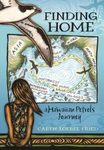![Restoring Paradise Restoring Paradise]()
Click to have a closer look
About this book
Customer reviews
Related titles
About this book
Three quarters of the United States' bird and plant extinctions have occurred in Hawaii, and one third of the country's threatened and endangered birds and plants reside within the state. Yet despite these alarming statistics, all is not lost: There are still 12,000 extant species unique to the archipelago and new species are discovered every year. In Restoring Paradise: Rethinking and Rebuilding Nature in Hawai'i, Robert Cabin shows why current attempts to preserve Hawaii's native fauna and flora require embracing the emerging paradigm of ecological restoration the science and art of assisting the recovery of degraded species and ecosystems and creating more meaningful and sustainable relationships between people and nature.
Cabin's extensive experience as a research ecologist and applied practitioner enables him to provide a rare, behind-the-scenes look at successful and inspiring restoration programs. In Part 1 he recounts Hakalau Forest National Wildlife Refuge's efforts to restore thousands of acres of degraded pasture on the island of Hawai'i back to the native rain forests that once dominated the area and sheltered native birds now on the brink of extinction. Along the way, he presents an overview of Hawaiian natural and cultural history, biogeography, and evolutionary biology. Following chapters look at restoration work underway by the U.S. Park Service to reestablish native species within the vast Hawai'i Volcanoes National Park; by a charismatic scientist and dedicated volunteers to restore the native forests of Auwahi on the southern slopes of Haleakala; and by the Limahuli branch of Kauai's National Tropical Botanical Garden to revive a thousand-year-old taro plantation. To investigate the compelling and often conflicting philosophies and strategies of those involved in restoration, Cabin opens Part 3 with interview excerpts from a cross-section of Hawaii's environmental community. He concludes with a provocative and insightful discussion of the contentious, evolving relationship between humans and nature and the power and limitations of science within and beyond Hawaii.
Customer Reviews



































